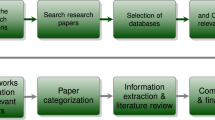Abstract
Trust brings a new method for building scalable and fine-grained access control mechanism in P2P systems. The quantificational expression of trust and the calculation of trust in a trust network are the basis of trust degree based access control. In this paper, the properties of trust is analyzed by referring to the fruits from social science; the semantics of trust in the context of access control is described, and a trust degree based access control model named TDBAC is introduced. Basing on the properties and semantics of trust, a computational trust model which includes a multilevel comprehensive evaluation method for expressing direct trust and calculators for computing recommended trust is put forward. To compute trust in a trust network, an algorithm that transforms a trust network to a computable expression is given. The algorithm simplifies the computation process and is also flexible.
Similar content being viewed by others
References
Fast A, Jensen D, Neil L B. Creating social networks to improve peer-to-peer networking. In: KDD’05: Proceeding of the Eleventh ACM SIGKDD International Conference on Knowledge Discovery in Data Mining, New York, 2005. 568–573
Krishnan R, Sandhu R, Niu J, et al. Formal models for group-centric secure information sharing. Technical Report CS-TR-2009-002. Department of Computer Science, The University of Texas, San Antonio, 2009
Li J, Dabek F. F2F: reliable storage in open networks. In: 5th International Workshop on Peer-to-Peer Systems (IPTPS’ 06), Santa Barbara, CA, USA, 2006
Blaze M, Feigenbaum J, Lacy J. Decentralized trust management. In: IEEE Conference on Security and Privacy, Oakland, CA, 1996. 5
Bizer C, Cyganiak R, Gauss T, et al. The TriQL.P browser: Filtering information using context-, content- and rating-based trust policies. In: Proceedings of the Semantic Web and Policy Workshop at the 4th International Semantic Web Conference, Galway, Ireland, 2005
Atrf Y. Building trust in e-commerce. IEEE Internet Comput, 2002, 6: 18–24
Bertino E, Khan L R, Sandhu R, et al. Secure knowledge management: confidentiality, trust, and privacy. IEEE Trans Syst Man Cybern A, 2006, 36: 429–438
Mudhakar S, Xiong L, Liu L. Trustguard: countering vulnerabilities in reputation management for decentralized overlay networks. In: Proceedings of the 14th International Conference on World Wide Web, New York, 2005. 422–431
Zhou R, Hwang F K. Powertrust: A robust and scalable reputation system for trusted peer-to-peer computing. IEEE Trans Parall Distr Syst, 2007. 18: 460–473
Blaze M, Feigenbaum J, Keromytis A D. KeyNote: Trust management for public-key infrastructures. Lecture Notes Comput Sci, 1999, 1550: 59–63
Chu Y H, Feigenbaum J, LaMacchia B, et al. REFEREE: Trust management for Web applications. World Wide Web 1997, 2: 127–139
Li N, Benjamin N G, Feigenbaum J. Delegation logic: a logic-based approach to distributed authorization. ACM Trans Inf Syst Secur, 2003, 6: 128–171
Beth T, Borcherding M, Klein B. Valuation of trust in open networks. In: Proceedings of the European Symposium on Research in Security (ESORJCS). Brighton: Springer-Verlag, 1994. 3–18
Jøsang A. The right type of trust for distributed systems. In: Proceedings of the 1996 New Security Paradigms Workshop. New York: ACM Press, 1996
Jøsang A, Hayward R, Pope S. Trust network analysis with subjective logic. In: Proceedings of the Australasian Computer Science Conference (ACSC’06), Hobart, 2006. 1
Ray I, Ray I, Chakraborty S. An interoperable context sensitive model of trust. J Intell Inf Sys, 2009, 32: 75–104
Abdul-Rahman A, Hailes S. A distributed trust model. In: Proceedings of the 1997 New Security Paradigms Workshop, New York: ACM, 1997
Abdul-Rahman A. A framework for decentralised trust reasoning. PhD thesis, University of London, 2004. 12
Tang W, Hu J B, Chen Z. Research on a fuzzy logic-based subjective trust management model. J Comput Res Dev, 2005, 42: 1654–1659
Richardson M, Agrawal R, Domingos P. Trust management for the semantic web. In: International Semantic Web Conference, Sanibel Island, Florida, USA, 2003. 351–368
Agudo I, Fernandez-Gago C, Lopez J. A model for trust metrics analysis. TrustBus 2008, LNCS 5185. Berlin: Springer-Verlag, 2008. 28–37
Huang J, Nicol D. A calculus of trust and its applications to PKI and identity management. In: 8th Symposium on Identity and Trust on the Internet, Gaithersburg, Maryland, USA, 2009. 23–37
Gambetta D, ed. Trust: making and breaking cooperative relations. Basil Blackwell, 1988
Hardin R. The street-level epistemology of trust. Polit Society, 1993, 21: 505–529
Christianson B, Harbison W. Why isn’t trust transitive? In: Proceedings of the Security Protocols Workshop. Cambridge, UK, 1996. 171–176
ISO 7498-2, OSI security architecture, Feb. 1989
Lampson B W. Protection. In: Proc 5th Princeton Conf on Information Sciences and Systems, Princeton, 1971. 437–443
Harrison M A, Ruaao W L. Protection in operating systems. Commun ACM, 1976, 19: 461–471
Zadeh L A. Fuzzy Sets. Inf Control, 1965, 8: 338–353
Guo Y J. Theory, Method and Application of Comprehensive evaluation. Beijing: Science Press, 2007
Author information
Authors and Affiliations
Corresponding author
Rights and permissions
About this article
Cite this article
Lang, B. A computational trust model for access control in P2P. Sci. China Inf. Sci. 53, 896–910 (2010). https://doi.org/10.1007/s11432-010-0108-7
Received:
Accepted:
Published:
Issue Date:
DOI: https://doi.org/10.1007/s11432-010-0108-7




